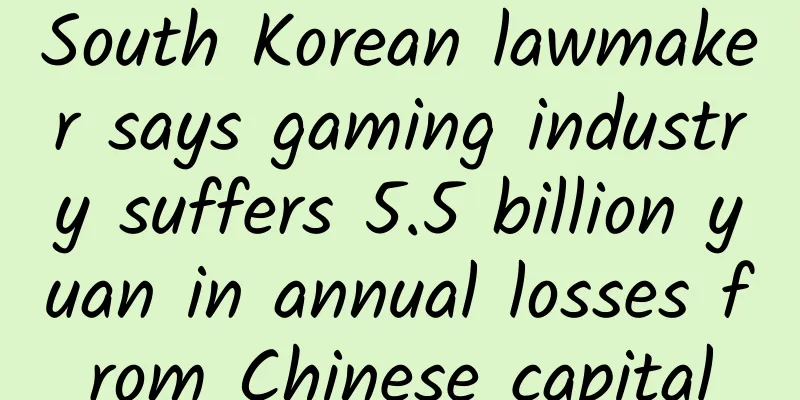Southwest Associated University: When the Stars Shine

|
Southwest Associated University: When the Stars Shine Zhang JinMember of the Intangible Cultural Heritage Working Committee of China Arts and Crafts Association Lu Zhi War in July, the Long March of the Cultural Army On July 7, 1937, Japan launched a war, and Pingjin fell successively. Many colleges and universities in the two places were occupied by the Japanese army or attacked by artillery fire, making it difficult to maintain normal teaching needs. In order to preserve the Chinese cultural context, on August 28, 1937, the Ministry of Education of the National Government instructed that Peking University, Tsinghua University, and Nankai University be merged in Changsha to form Changsha Temporary University, and designated (Peking University President) Jiang Menglin, (Tsinghua President) Mei Yiqi and (Nankai President) Zhang Boling as members of the Changsha Temporary University Preparatory Committee, initially building the leadership team of the Temporary University. Teachers and students of the three schools and some teaching equipment successively took trains southward, first to Hankou, and then to Changsha by boat. On September 10, 1937, the Ministry of Education of the National Government officially announced the establishment of the National Changsha Temporary University. The reason for choosing Changsha as the site was that Changsha was located in the heart of China and the Japanese army had not occupied it for the time being; secondly, Tsinghua University had secretly begun to build school buildings at the foot of Yuelu Mountain in Changsha in 1935, in case of emergency, and had a certain foundation for running a school. On October 25, 1937, the National Changsha Temporary University officially opened. On November 1, 1937, the National Changsha Temporary University officially started classes, and this day was later designated as the anniversary of Southwest Associated University. The Temporary University integrated the original colleges and departments of Tsinghua University, Peking University, and Nankai University, and established 17 departments. As of November 20, 1937, there were 1,452 students on campus. Yes, Southwest Associated University was not called Southwest Associated University at the beginning, but the National Changsha Temporary University, abbreviated as Temporary University. At that time, the universities that were forced to move inland were not only Peking University, Tsinghua University, and Nankai University. For example, Peking Normal University moved to Lanzhou, Gansu, Zhejiang University moved to Zunyi, Guizhou, Fudan University moved to Beibei, Chongqing, Wuhan University moved to Leshan, Sichuan, and Central University moved to Shapingba, Chongqing and Huaxiba, Chengdu, etc. Unfortunately, in early 1938, the Japanese army expanded along the Yangtze River and the war continued to spread inland. In order to ensure that education could continue, the National Changsha Temporary University decided to retreat southwest to Kunming, Yunnan. Hunan, Guizhou and Yunnan Walking Group, towards a new future There are three routes from Changsha to Kunming: girls and weak boys take the sea route to Guangzhou and then enter Yunnan via Hong Kong and Vietnam; teachers and some students take a car along the Hunan-Guangxi Highway to Guilin, and then enter Yunnan via Liuzhou, Nanning and Vietnam; some boys and teachers organize a Hunan-Guizhou-Yunnan walking group, which travels more than 1,600 kilometers and takes 68 days to walk from Changsha to Kunming. Before telling the story of the Hunan-Guizhou-Yunnan Walking Group, it is necessary to explain the historical background at that time. In fact, the young students at that time were full of fear for the future and destiny of individuals and the country. A student named Dong Fen wrote a diary on January 19, 1938. He wrote: "There are two ways, one is to study, and the other is to save the country. General Chen Cheng of the authorities said that you should study hard for the future revival; but General Zhang said that your life of neither life nor death is of no use to the country, and you should put down your books and encourage them to go to the front line. The teachers also said inconsistently. President Jiang Menglin said to go to Yunnan to continue studying. But a professor named Gao Chongxi said: Why are you still coming to class? The meaning is that you should go to the front line." Therefore, the significance of the Hunan-Guizhou-Yunnan Walking Group is very significant. First of all, China was at a critical juncture at that time. Some boys and teachers walked from Changsha to Kunming, a journey of more than 1,600 kilometers. This itself represents a declaration: Although the Japanese invaders came, our cultural context must continue. We use our feet to measure the land of China, and we will not surrender! Secondly, many of these students grew up in cities. They have little intuitive knowledge of China's poor areas, especially the southwest region, and they are full of confusion about their future and destiny. It was this walk that freed them from confusion and determined their future path by understanding the suffering of the people in southwest China. Later, many students of Southwest Associated University actively joined the army to serve the country, which may also be related to this. Indeed, many students of Southwest Associated University joined the army. In 1941, American flight instructor Chennault was commissioned by the Chinese government to establish the American Volunteer Group of the Chinese Air Force in Yunnan, commonly known as the "Flying Tigers". American soldiers did not know Chinese, so a large number of translators were needed. All male juniors and seniors of Southwest Associated University were recruited to translate at the front. Xu Yuanchong (later a famous translator) enlisted in the army and became an officer in the confidential secretary office of the Flying Tigers headquarters, responsible for translating Chinese and English intelligence. Once, the intelligence translated by Xu Yuanchong said that Japanese planes would enter the Hanoi Airport in Vietnam, which aroused his vigilance. Based on the intelligence analysis, the military personnel believed that the Japanese army was likely to launch an air raid on Kunming, and asked Xu Yuanchong to translate the intelligence into English as soon as possible and send a special car to send him to Chennault's headquarters. The Flying Tigers quickly took countermeasures and successfully intercepted the Japanese army over Dianchi Lake the next day. Because of Xu Yuanchong's outstanding achievements during the war, Chennault awarded him a gold-plated "Flying Tiger Medal". Even more heroic were Dai Rongju from the Department of Geology, Wang Wen from the Department of Mechanical Engineering, and Wu Jian from the Department of Aeronautics. They became air force pilots and all died in battles with enemy aircraft. After the war, the National Southwest Associated University erected a monument with the names of 832 students who died in the war. Philosopher Feng Youlan wrote the inscription: "More than 2,000 people graduated from the university, and more than 800 of them joined the army." In fact, more than 1,100 students died during the war, the highest number among all Chinese universities during the war. Eight years at Southwest Associated University: devastated but also brilliant On April 2, 1938, the Ministry of Education of the National Government telegraphed and ordered the National Changsha Temporary University to be renamed the National South-West Associated University, with 26 departments in five schools, namely, liberal arts, science, engineering, law, business, and teacher training, as well as two specialized courses and one elective class. On May 4, the National South-West Associated University officially opened. How do you evaluate this temporary university that existed for only eight years? Lin Yutang said: "Materially, it was amazing! Spiritually, it was amazing!" How can one be so “amazing” in terms of material things? The key word is one: poor. Although the Nationalist government had financial allocations, as the war continued, Southwest Associated University's funding was cut to the point where it could no longer be sustained. The classrooms here were houses with iron roofs, and later even the iron had to be sold and replaced with thatched roofs. There was no glass in the windows, so when the wind blew, you had to find something to hold down the paper, otherwise it would be blown away. If it rained, the rain would wet your shoulders. Once, Mr. Chen Daisun, a professor at the Department of Economics of the Associated University, simply wrote "suspend classes and enjoy the rain" on the blackboard. There are no seats in the cafeteria, so people have to stand to eat. The food they eat is "eight-treasure rice", which includes sand, sawdust, and mouse droppings. In order to eat vegetables, the school has set up a vegetable planting team, with botanist Li Jitong as the team leader, and teachers participating in watering and fertilizing throughout the process, so that the food can be green. The site of Southwest Associated University was outside the Great West Gate of the old city of Kunming. At that time, the conditions for running the school were very difficult, and the school buildings were very scattered. Some school buildings were borrowed from existing schools, houses, and ancestral halls in Kunming, while some were newly built. Soon after the school moved to Kunming, the principal Mei Yiqi invited architects Liang Sicheng and Lin Huiyin to design the school building. Due to lack of funds, Liang and Lin changed the design draft again and again, and the high-rise building became a low building, the low building became a bungalow, and the bungalow became a thatched hut. After more than two months of revisions and five submissions, the design draft was not approved. Liang Sicheng finally couldn't stand it anymore: "Every farmer can build a thatched house, so why do you need me to do it?" Mei Yiqi said apologetically: "Sicheng, please forgive me once for your generosity. We really don't have that much money." The salary of teachers at Southwest Associated University was also pitifully low, with assistants earning 100 to 200 yuan per month, lecturers earning 180 to 300 yuan per month, associate professors earning 240 to 400 yuan per month, and professors earning 300 to 600 yuan per month. At that time, rice in Kunming was 7 yuan per catty, which means that the top professors at the best universities in China could not afford 90 catties of rice with their monthly salary! Moreover, even with such a small salary, it was often not paid. Once, the writer Zhu Ziqing went to the street and was chased by a beggar to beg. Zhu Ziqing said helplessly, "I am a professor." The beggar turned around and walked away. How to be "remarkable" spiritually? The key word is freedom. First, professors are free. No one interferes with the professors in class. They can talk about whatever they want and how they want. On the first day of class, historian Chen Yinke said, "I will not talk about what the predecessors have said; I will not talk about what the moderns have said; I will not talk about what foreigners have said; I will not talk about what I have said in the past. Now I will only talk about what no one has said before." Secondly, the management of students at the United Nations University was also very free. It was quite easy for students to transfer departments, and they would not be held accountable for occasionally "skipping classes". For example, the later novelist Wang Zengqi often read books in teahouses during the day and read novels alone in the Chinese Department library at night. Writer Ma Shi Tu is the oldest living alumnus of Southwest Associated University. He is 107 years old this year and is a genuine veteran Party member. He once recalled the influence of the atmosphere of Southwest Associated University on him, saying that this was the most prominent feature of Southwest Associated University. Mr. Ma Shi Tu was also a revolutionary with a legendary experience. He was originally admitted to the Department of Chemical Engineering of Nanjing Central University. He initially wanted to learn how to make explosives to fight against the Japanese. Later, when the Anti-Japanese War broke out, he joined the revolution. After the "Southern Anhui Incident" (the conflict between the Kuomintang and the Communist Party) in 1940, he moved to Kunming and was admitted to Southwest Associated University. This "academic master" was admitted to the Department of Chinese Language and Literature because he majored in ancient characters. Ma Shi Tu once told a story: One day, two professors happened to be talking about the same topic in two classrooms next to each other, and they could hear each other. Halfway through the class, one professor said, "I don't quite agree with the professor next door," so he went to the next classroom to argue with the professor, and had a heated debate in class. Finally, the bell rang, and everyone walked out of the classroom hand in hand with a smile. Another time, a student suddenly said to the professor during class: "I'm sorry, you're not right." The professor said, "If you have any brilliant ideas, come up and speak!" Then the student went up and spoke, and the professor was still commenting on him from below. This was extremely rare in Chinese universities at the time. Students could oppose their teachers and everyone could express their own opinions. This was a clear example of the spirit of Southwest Associated University. This was perhaps the key to the success of Southwest Associated University. Only in a free and open environment can outstanding talents be cultivated. The Great Southwest Associated University: When Talents Shine In 1938, Yang Zhenning, his mother, brother, and sister arrived in Kunming via Guangzhou, Hong Kong, and Hanoi, Vietnam, and finally reunited with his father. Yang Zhenning's father, Yang Wuzhi, was the head of the Department of Mathematics at Southwest Associated University. In the autumn of that year, Yang Zhenning took the unified entrance examination with a high school degree and was finally admitted to Southwest Associated University with the second place. He was the youngest student in that class, only 16 years old. When Yang Zhenning first entered school, he followed his father's order and applied for the Department of Chemistry, but later changed to the Department of Physics. In 1941, 17-year-old Deng Jiaxian was also admitted to the Department of Physics of Southwest Associated University and became Yang Zhenning's junior. Yang Zhenning and Deng Jiaxian were from the same hometown of Anhui, and their families were old friends, so the two had a very good relationship. During a Japanese bombing, Yang Zhenning and Deng Jiaxian hid in an air-raid shelter together. When the dust fell and the sky and the earth shook, Yang Zhenning recited Lu You's "November 4th, the wind and rain were strong", "Lying down late at night listening to the wind and rain, iron horses and icy rivers came into my dreams". Deng Jiaxian recited Wang Wei's "Autumn Night in the Mountain", "The bright moon shines among the pines, and the clear spring flows over the rocks". In 1942, after graduating from undergraduate school at the age of 20, Yang Zhenning continued his graduate studies at Southwest Associated University. When he graduated from graduate school in 1944, Li Zhengdao, a boy from Suzhou who was four years younger than him, transferred from the Physics Department of Zhejiang University, which had moved to Guizhou, to Southwest Associated University and became his junior. At that time, Tsung-Dao Lee carried a letter of recommendation from his mentor at Zhejiang University and traveled through thousands of mountains and rivers to Yunnan to find Wu Dayou, a physics professor at Southwest Associated University. On the road of war, Tsung-Dao Lee experienced a car accident. After being hospitalized for treatment, he continued to move forward. Finally, in Gangtou Village in the northern suburbs of Kunming, Tsung-Dao Lee knocked on Wu Dayou's door. Wu Dayou randomly asked some physics questions, and Tsung-Dao Lee's answers surprised and delighted him again and again. The next day, Wu Dayou went to the Department of Physics of Southwest Associated University and announced: "Everyone, I have discovered a physics genius." "Discovering Tsung-Dao Lee" has become a good story in Southwest Associated University and the physics community. In 1945, 23-year-old Yang Zhenning received the "Boxer Indemnity Scholarship" and went to the United States to study under the famous theoretical physicist Edward Teller and pursued a doctorate at the University of Chicago. The following year, 20-year-old Li Zhengdao also entered the University of Chicago to study for a doctorate under the Nobel Prize winner in Physics Professor Fermi, becoming Yang Zhenning's junior again. In 1947, Deng Jiaxian passed the graduate school entrance examination in the United States and entered Purdue University in Indiana to pursue a doctorate. In 1948, 26-year-old Yang Zhenning received his doctorate. A year later, he entered the Institute for Advanced Study in Princeton for postdoctoral research. Soon, he invited Li Zhengdao to work with him on research. Everyone knows the result: Yang Zhenning and Li Zhengdao won the 1957 Nobel Prize in Physics for jointly proposing the "Theory of Parity Non-Conservation in Weak Interactions"; Deng Jiaxian returned to China after graduating with a doctorate in 1950 and became a famous nuclear physicist. He made great contributions to China's scientific and technological development and was posthumously awarded the "Two Bombs and One Satellite" Medal of Merit by the state in 1999. It can be said that the study at Southwest Associated University laid a solid foundation for the future achievements of the three of them. From August 28, 1937, when the Ministry of Education of the Republic of China decided to establish the National Changsha Temporary University, to July 31, 1946, when the National Southwest Associated University ceased to operate, the Southwest Associated University existed for less than nine years. Although only 3,882 students graduated, many of them are national treasures. Among them, there are 2 Nobel Prize winners, 5 winners of the National Highest Science and Technology Award, 8 "Two Bombs and One Satellite Heroes", 175 academicians, 9 party and state leaders, and more than 100 humanities masters. Nowadays, many Chinese universities are committed to establishing world-class universities. Southwest Associated University, which was once a world-class university, is naturally remembered by people. Mr. Yi Sheqiang, an alumnus of Southwest Associated University and a retired professor of history at the University of Virginia, summarized in his book "Southwest Associated University in War and Revolution": "Many legacies of the Associated University have been dedicated to the world. In difficult environments, it maintained the most noble thoughts and spirits; in the era of war and revolution, it demonstrated the adaptability of general education, and the Associated University won a place for itself in the history of human struggle." After the victory of the Anti-Japanese War, the National Southwest Associated University ceased operations, and Peking University, Tsinghua University, and Nankai University moved back to their original locations. The teachers, students, and school property of the three schools first set out from Yunnan by truck, passed through Guizhou and entered Hunan, then took a river ship to Hubei, Jiangsu, Shanghai, and other places, and then took a train or ocean ship back to Beijing and Tianjin. The Normal College remained in Kunming and was set up independently, renamed the National Kunming Normal College, which is today's Yunnan Normal University. The former site of Southwest Associated University is located in the campus of Yunnan Normal University in Wuhua District, Kunming City, Yunnan Province. It is a historical witness to the eight years of operation of Southwest Associated University in Yunnan during the Anti-Japanese War. There are 14 historical relics such as the original classrooms of Southwest Associated University and the Southwest Associated University Monument preserved here. It is the most complete and concentrated place for the historical relics of Southwest Associated University. There is also a museum built in the former site, which is currently the exhibition hall with the most and most concentrated physical materials about Southwest Associated University in the country. |
<<: Danger! Beware of these 4 conditions that may occur to your parents after COVID-19
Recommend
The inspiration for the mechanical "dragon" that can cross mountains and seas actually comes from insects?
Excerpted from: Inside and Outside the Classroom ...
What does a high-conversion information flow ad look like?
For information flow advertising , the content an...
How long does it take to produce a new energy heavy truck? "Less than 5 minutes!"
Editor's note: Millions of IPs create science...
Bill Gates: Artificial intelligence and gene therapy can save lives
Microsoft founder Bill Gates believes that artifi...
The secret to explosive growth in short video ads!
The "White Paper on the Value of Bytedance S...
Huawei releases the latest Internet of Vehicles platform: Digital cars are no longer a dream
According to foreign media reports on June 12, Hu...
How to effectively deploy private domain traffic? Share 3 links!
The traffic dividend in the second half of the In...
Putting two electric fans together can cause suffocation to death? This is something you really need to pay attention to in the summer...
In the summer of 1973, 37-year-old Korean man Lee...
The irresistible "bloody romance"
In early 1799, Jiaqing finally breathed a sigh of...
Mobile phone ordering project source code
Source code introduction: Mobile phone ordering p...
Super Flash Hao Keming: Mobile Flash web games are in a new blue ocean era
This is an era of universal entertainment. The ex...
How to create word-of-mouth local life mini programs and local life service mini programs?
A few days ago, a customer consulted our company ...
Xiaohongshu marketing strategy for car companies!
Starting from objective data and real cases, this...
I was shocked to find out that orange peels and apple cores cannot be thrown into the mountains!
Not long ago, my colleagues from Guokr went to th...
Boss, let’s talk about the most effective channel for attracting new customers!
Background knowledge: CAC = cost to acquire a sin...









